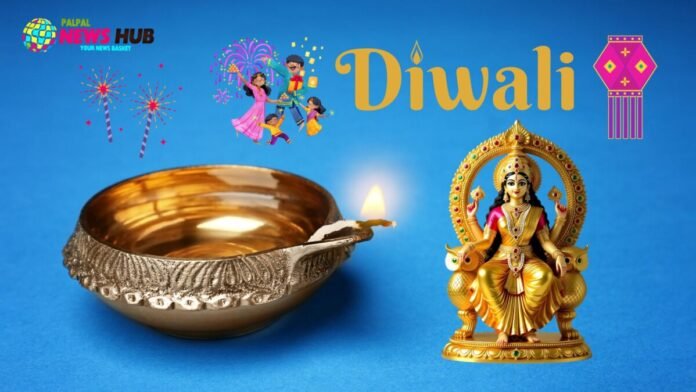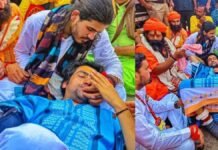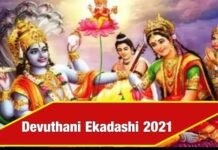
Key Points:
- Diwali is being celebrated across India on Monday, October 20, 2025, marking the festival of lights with unprecedented auspiciousness
- The Amavasya Tithi (new moon) began on October 20 at 3:44 PM and will end on October 21 at 5:54 PM, spanning two calendar days
- The rare conjunction of Hasta and Chitra Nakshatras during Diwali is amplifying the spiritual and material benefits of the festival
- Lakshmi Puja Muhurat falls between 7:08 PM to 8:18 PM on October 20, with Pradosh Kaal from 5:46 PM to 8:18 PM
- Dhanteras was celebrated on Saturday, October 19, under the auspicious Shani Pradosh conjunction with Purvaphalguni Nakshatra
- The five-day festival concludes with Bhai Dooj on October 23, 2025
New Delhi: immersed in the joyous celebration of Diwali, the Festival of Lights, with millions of homes illuminated by traditional diyas, candles, and colorful decorations. The festival, celebrated on the Amavasya (new moon day) of Kartik month, holds exceptional significance this year due to the rare astrological alignment of Hasta and Chitra Nakshatras occurring simultaneously with the main Diwali celebrations. Streets across the nation are bustling with festive energy as families exchange gifts, prepare traditional sweets, and gather for worship ceremonies dedicated to Goddess Lakshmi and Lord Ganesha.
The confusion regarding whether to celebrate on October 20 or 21 has been resolved by astrologers, who confirm that since the Amavasya Tithi begins at 3:44 PM on October 20 before sunset, this date is the primary day for Diwali celebrations and Lakshmi Puja across most regions of India. However, some regions with earlier sunset timings (before 5:30 PM) may observe the festival on October 21.
Dhanteras Sets an Auspicious Beginning
The five-day Diwali festivities commenced with Dhanteras on Saturday, October 19, 2025, which was celebrated under the highly auspicious conjunction of Shani Pradosh and Purvaphalguni Nakshatra. Devotees worshipped Lord Dhanvantari, the divine physician, and Goddess Lakshmi with immense devotion, while markets witnessed tremendous activity as families purchased gold, silver, brass utensils, and new items to welcome prosperity into their homes. According to Hindu tradition, buying metals and new vessels on Dhanteras is considered extremely auspicious and brings long-term wealth and good fortune.
Following Dhanteras, Naraka Chaturdashi or Choti Diwali was observed on Sunday, October 19, when devotees performed the ritual Abhyang Snan (holy oil bath) before sunrise to cleanse themselves of negative energies. In South Indian traditions, this day marks the main Deepavali celebration, commemorating Lord Krishna’s victory over the demon Narakasura.
Rare Hasta and Chitra Nakshatra Combination
This year’s Diwali stands out due to the exceptional conjunction of two powerful Nakshatras, Hasta and Chitra, occurring during the festival period. According to Vedic astrology, Hasta Nakshatra is renowned for bestowing prosperity, skill development, exceptional dexterity, and favorable outcomes in all endeavors. When Goddess Lakshmi is worshipped during Hasta Nakshatra, devotees receive blessings of wealth, happiness, and family prosperity more rapidly and abundantly.
Following Hasta, the Chitra Nakshatra begins, which symbolizes beauty, artistic excellence, creativity, and grandeur. Vedic texts emphasize that lighting diyas and performing Lakshmi Puja during Chitra Nakshatra significantly enhances one’s creative abilities, brings fame and recognition, and accumulates special spiritual merit (punya). This rare celestial alignment occurring during Diwali creates an extraordinarily auspicious window for worship, making this year’s festival spiritually potent and materially beneficial.
Lakshmi Puja Timings and Sthir Lagna
The main Lakshmi Puja on October 20, 2025, should be performed during specific auspicious time windows for maximum spiritual benefits. The primary Lakshmi Puja Muhurat extends from 7:08 PM to 8:18 PM, which falls within the highly favorable Pradosh Kaal (twilight period) lasting from 5:46 PM to 8:18 PM. The Vrishabha Kaal, considered ideal for Goddess Lakshmi worship, occurs between 7:08 PM and 9:03 PM.
According to astrological traditions, performing Lakshmi Puja during Sthir Lagna (fixed zodiac signs) ensures that the blessings of prosperity and wealth remain permanently established in the household. The most auspicious Sthir Lagnas for October 20 include Aquarius Lagna from 2:36 PM to 4:07 PM (before the Pradosh period), Taurus Lagna from 7:12 PM to 9:08 PM (the most powerful timing during Pradosh), and Leo Lagna from 1:40 AM to 3:54 AM during the Nishitha period, which is particularly beneficial for advanced Tantric worship practices.
Diwali Traditions and Significance
Diwali celebrates the eternal victory of light over darkness, knowledge over ignorance, and good over evil. In North India, the festival commemorates Lord Rama’s triumphant return to Ayodhya after defeating Ravana and completing his 14-year exile, when citizens illuminated the entire kingdom with countless oil lamps to welcome their beloved king. This ancient tradition of lighting diyas continues today, symbolizing the removal of spiritual darkness and the welcoming of divine light into homes and hearts.
On this sacred night, families gather to perform elaborate Lakshmi-Ganesha Puja in homes and business establishments, seeking blessings for prosperity, success, and obstacle-free progress in all ventures. The worship ritual involves offering flowers, incense, sweets, and prayers to Goddess Lakshmi, Lord Ganesha, and Lord Kuber (the treasurer of wealth). After the puja, families light numerous diyas and candles throughout their homes, creating a magical ambiance that drives away negativity and invites positive energies.
Regional Variations and City-Specific Timings
While October 20 is the primary celebration date for most of India, regional variations exist based on local sunset timings. Cities where sunset occurs after 5:30 PM are celebrating Diwali on October 20, while regions with earlier sunsets may observe the main festivities on October 21. Specific Lakshmi Puja timings vary slightly across major cities: Delhi observes the muhurat from 7:08 PM to 8:18 PM, Chennai from 7:20 PM to 8:14 PM, and Kolkata from 5:06 PM to 5:54 PM.
Local priests and astrologers recommend consulting the regional panchang (Hindu calendar) for precise timings based on geographical location to ensure rituals are performed at the most auspicious moments. Despite these minor variations, the essence of Diwali remains uniform across India, lighting diyas, worshipping Goddess Lakshmi, exchanging sweets and gifts, and celebrating togetherness with family and community.
Five-Day Festival Schedule
The complete Diwali festival spans five days, each with distinct significance and rituals. Day one, Dhanteras (October 18), focuses on wealth and health worship. Day two, Naraka Chaturdashi or Choti Diwali (October 19), celebrates victory over evil forces. Day three, the main Diwali or Lakshmi Puja (October 20), is dedicated to worshipping the goddess of wealth and prosperity. Day four, Govardhan Puja or Annakut (October 21), honors Lord Krishna’s protection of devotees by lifting Govardhan Hill, with elaborate food offerings presented in temples. The festival concludes with Bhai Dooj on October 23, celebrating the sacred bond between brothers and sisters, when sisters apply a tilak on their brothers’ foreheads and pray for their long life while exchanging gifts and sweets.
Modern Celebrations and Environmental Consciousness
While traditional celebrations continue with full fervor, there is growing awareness about celebrating an eco-friendly Diwali. Many families are opting for traditional clay diyas instead of electric lights, choosing sustainable decorations, and limiting firecrackers to reduce air and noise pollution. Markets are experiencing robust business as people shop for new clothes, home decor items, sweets, and gifts, contributing significantly to the festive economy.
The convergence of ancient astrological wisdom with contemporary celebrations makes Diwali 2025 particularly memorable, as devotees across India embrace both tradition and modernity to celebrate this luminous festival of hope, renewal, and divine blessings.












































